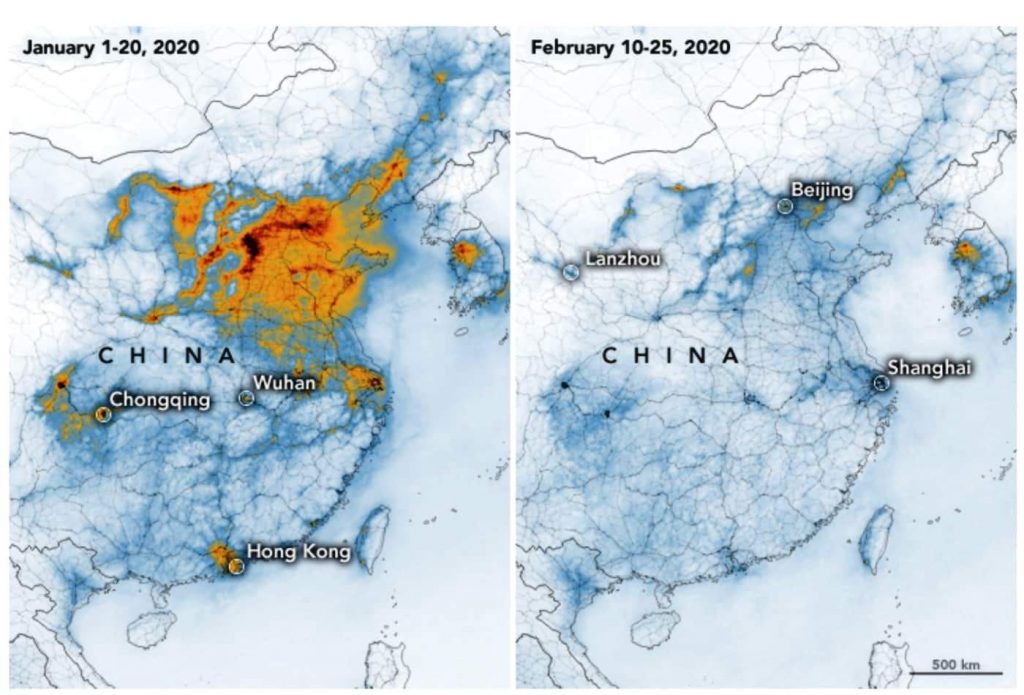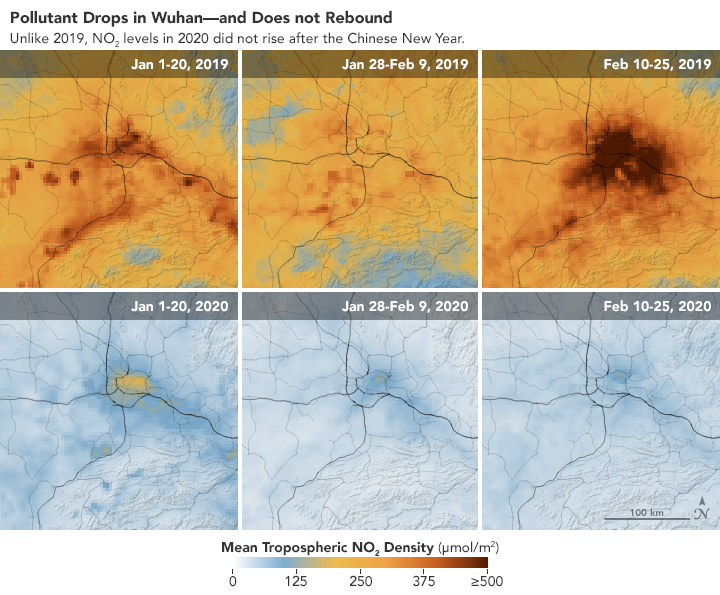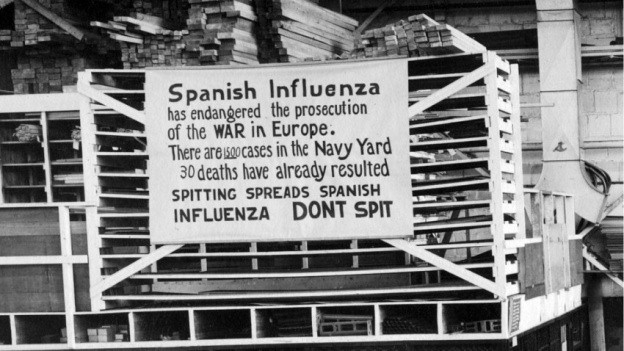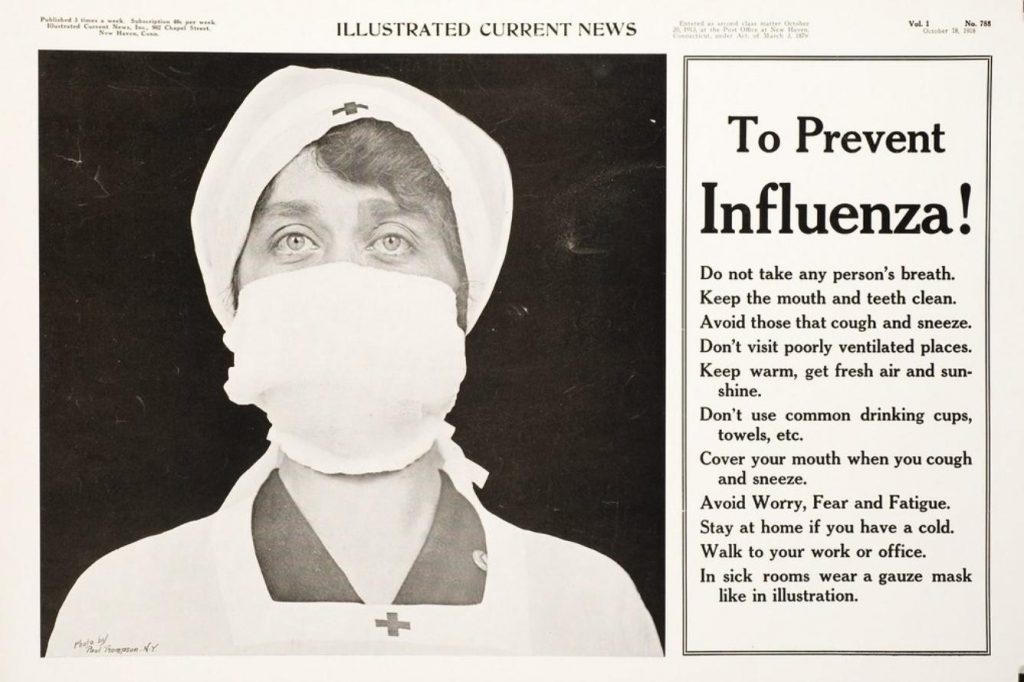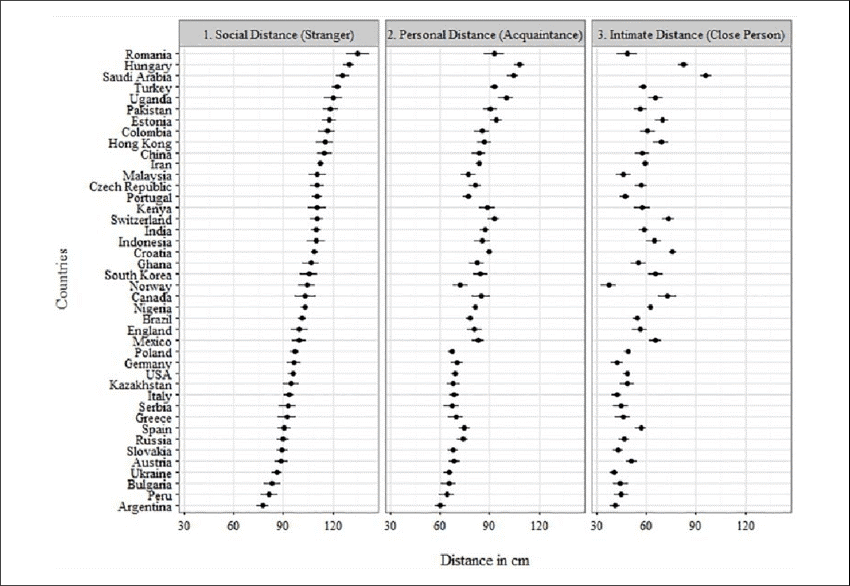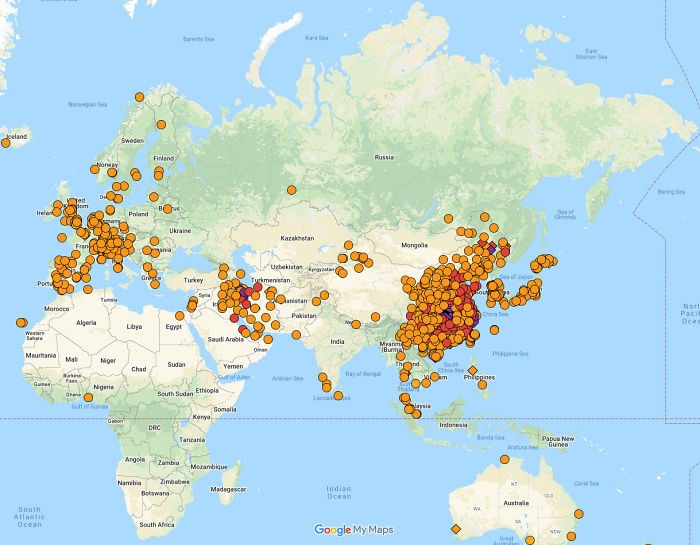Tariq Saeedi
The media is building the hype and the politicians are scoring cheap points but Coronvirus (Covid-19) is more like a visit of a joint delegation of our past and our future.
The seemingly uncontrollable wave of coronvirus will abate, possibly as early as next month. There may also be a second, deadlier wave. In any case, it will not go away completely; it will just lurk somewhere, ready to strike again. It might even mutate unpredictably.
Meanwhile, there is the need to learn some important lessons from the history with the purpose to shape our today, and, so to speak, perform corrective surgery on our tomorrow.
First of all, there is the need to acknowledge that coronavirus is not the leading cause of death, as yet. The panic being attached to it is disproportional:
|
Cause of death |
Average daily deaths |
| Heart diseases | 49000 |
| Cancer | 26000 |
| Air pollution | 12600 |
| Road accidents | 3700 |
| Suicide | 2000 |
| Homicide | 1270 |
| Seasonal flu | 795-1780 |
| Coronavirus |
56 |
The average number of deaths from coronavirus (Covid-19) is based on worldwide figures from 22 January 2020 to 7 March 2020. The highest number of deaths in a single day was 158, on 23 February 2020
The fatalities caused by coronavirus are still less than 7% of the deaths caused daily by the seasonal flu.
* * *
The periodic appearance of ruthless invaders and deadly diseases is sometimes called the Scalpels of God. Or, it can be akin to the artist erasing a part of the canvas to start over again to improve the masterpiece. This is how the nature intervenes when the people go too far in an unsustainable direction.
Perhaps there is some truth in the idea of ‘shock therapy.’
Emir Timur (Tamerlane for those still stuck in the bottleneck of history) writes in his autobiography that after he had sacked Ispahan, he allowed the remaining population to rebuild the city. He was surprised to see that the people built spacious houses and wide streets. They created a city that was quite unlike the old Ispahan.
Phoenix arising from the ashes of its predecessor?
* * *
Julia Pongratz of the Carnegie Institution’s Department of Global Ecology has argued in a research paper that the invasions started by Genghis Khan cooled the planet.
In the study published in The Holocene, Pongratz along with Carnegie colleague, Ken Caldeira, and German colleagues at the Max Planck Institute for Meteorology, compiled a model of global land cover beginning in 800 AD. She kept her eye on four historical events closely, which she theorized could have impacted the climate due to the return of forests after depopulation: the Black Death in Europe (the end of the 14th Century), the fall of China’s Ming Dynasty (the last half of the 17th Century), the conquest of the Americas (the 16th and 17th Centuries), and the Mongol invasion of the 13th and 14th Century.
“We found that during the short events such as the Black Death and the Ming Dynasty collapse, the forest re-growth wasn’t enough to overcome the emissions from decaying material in the soil,” explains Pongratz. “But during the longer-lasting ones like the Mongol invasion and the conquest of the Americas there was enough time for the forests to re-grow and absorb significant amounts of carbon.”
The Mongol invasion had the most significant impact. According to the study’s accounting, re-growth of forests during the Mongol invasion absorbed 700 million tons of carbon from the atmosphere, equaling the amount of carbon global society now produces annually from gasoline.
Pongratz argues that her study has relevance for the world’s current climate crisis: “Today about a quarter of the net primary production on the Earth’s land surface is used by humans in some way, mostly through agriculture. […]. In the past we have had a substantial impact on global climate and the carbon cycle, but it was all unintentional. Based on the knowledge we have gained from the past, we are now in a position to make land-use decisions that will diminish our impact on climate and the carbon cycle. We cannot ignore the knowledge we have gained.”
Of course, before society can even consider global reforestation, global deforestation must be halted. Despite worldwide concern and numerous initiatives over the years (both local and global) forests continue to fall at staggering rates. Currently around 10% of the world’s greenhouse gas emissions come from deforestation.
“It’s a common misconception that the human impact on climate began with the large-scale burning of coal and oil in the industrial era,” says Pongratz, lead author of the study in a press release. “Actually, humans started to influence the environment thousands of years ago by changing the vegetation cover of the Earth‘s landscapes when we cleared forests for agriculture.”
The answer to how this happened can be told in one word: reforestation. When the Mongol hordes invaded Asia, the Middle East, and Europe they left behind a massive body count, depopulating many regions. With less people, large swathes of cultivated fields eventually returned to forests, absorbing carbon dioxide from the atmosphere.
More on this: https://news.mongabay.com/2011/01/how-genghis-khan-cooled-the-planet/
* * *
The intervention by nature, whether through an invader or a deadly disease, restores the environmental equilibrium.
Just a few weeks into the current wave of coronavirus spreading outward from China, this phenomenon was noticeable already.
Satellite images from NASA show a surprising effect of the novel coronavirus (COVID-19) outbreak in China: less air pollution.
Using pollution monitoring satellites, NASA measured the air’s concentration of nitrogen dioxide (NO2), a gas that ends up in the air from burning fuel, primarily from cars, trucks, buses and power plants.
From Jan. 1 to 20, and Feb. 10 to 25, researchers saw a “significant decrease” in pollution over Wuhan and the rest of China due at least in part to an “economic slowdown” resulting from the virus outbreak, according to a NASA release.
The maps above show the density of NO2 concentrations in blue, yellow and orange across China during those time periods. The reduction started in Wuhan, and then spread to the rest of the country, according to NASA.
“This is the first time I have seen such a dramatic drop-off over such a wide area for a specific event,” Fei Liu, an air quality researcher at NASA’s Goddard Space Flight Center, said in a NASA release.
Typically, there are lower levels of NO2 in China around this time of year, as many businesses and factories close for the country’s Lunar New Year celebrations. The maps below illustrate how the NO2 concentrations (in blue, yellow and orange) dropped during the 2019 Lunar New Year festival, and then rose afterwards when business resumed.
NASA images show ‘significant decreases’ in air pollution over China amid coronavirus economic slowdown—take a look
NASA images show a decrease in China’s pollution related to coronavirus shutdown
https://edition.cnn.com/2020/03/01/world/nasa-china-pollution-coronavirus-trnd-scn/index.html
* * *
The universal lesson is that nature abhors imbalance. Intemperance is punished.
One part of the solution is that the speed of reforestation should be more than the speed of deforestation. We should be planting more trees than we are cutting down every day.
A corollary to this line of argument is that the current economic model of perpetual growth is not sustainable.
Now is the time to start developing another model, based on the sustainability of the entire planet. This can only happen when the economists are also the environmentalists.
Part of the solution demands the reversal of globalization. Part of the solution is in speedy digitalization. Part of the solution is in the discouragement of consumerism.
* * *
This is also the time to remember the nearly forgotten Spanish flu (the 1918 influenza pandemic of January 1918 to December 1920). It was the first of the two pandemics involving H1N1 influenza virus, with the second being the swine flu in 2009.
It infected nearly 500 million people around the world, or about 27% of the then world population. The death toll is estimated to have been anywhere from 17 million to a 100 million, making it one of the deadliest epidemics in human history.
The origin of the Spanish flu is believed to be Kansas, USA. As such it should have been called Kansas virus or American virus. However the wartime censorship was in place and the media did not report the prevalence of the virus in the USA, Great Britain, or France. Spain was not a part of the WWI and that is why the media felt free to report the widespread deaths caused by the virus there, hence the nickname Spanish flu.
While struggling to contain the Spanish flu, the doctors and scientists found that spitting was one of the reasons of its spread.
A campaign was run to discourage spitting, systematically making it an undesirable, uncultured habit to spit anywhere in the public.
Image credit – The Philadelphia Inquirer
Image credit – NBCphiladelphia
Image credit – Haverford Township Historical Society
The campaign was quite successful. Now the spitting in public places is frowned upon. In most of the societies around the world, spitting is considered an uncouth behavior.
* * *
Just as the people faced with the Spanish flu decided to change some of the previously accepted social practices, we are required to review the complete set of our social norms. Nothing should be taboo in the name of culture or tradition – we need to scrutinize everything.
In doing so, we need to find as to why the coronavirus spread so fast in China, Iran, and Italy. These are three different societies, three different cultures.
Some researchers are looking at the possibility if the perceived sense of ‘personal space’ plays any role in the spread of this virus. As we know, when a person infected with coronavirus sneezes, the droplets fly up to 1.5 meters. Is it possible that the societies with smaller personal space are suitable ground for the spread of this virus?
The people who are trying to theorize along these lines are citing a study by Agnieszka Sorokowska of the University of Wroclaw, Piotr Sorokowski of the University of Wroclaw, Peter Hilpert of the University of Surrey, and Katarzyna Cantarero of the University of Social Sciences and Humanities.
The study, titled ‘Preferred Interpersonal Distances: A global comparison’ combines the results of response of about 9000 people from 42 countries.
The abstract of the study says, in part: “The objective of the present study was to compare preferred interpersonal distances across the world and to overcome the problems observed in previous studies. We present an extensive analysis of interpersonal distances over a large data set (N = 8,943 participants from 42 countries). We attempted to relate the preferred social, personal, and intimate distances observed in each country to a set of individual characteristics of the participants, and some attributes of their cultures. Our study indicates that individual characteristics (age and gender) influence interpersonal space preferences and that some variation in results can be explained by temperature in a given region. We also present objective values of preferred interpersonal distances in different regions, which might be used as a reference data point in future studies.”
The report is available at several academic sites including here: https://www.researchgate.net/publication/315536031_PREFERRED_INTERPERSONAL_DISTANCES_A_GLOBAL_COMPARISON
* * *
Our scrutiny should not be limited to the search for correlation between the personal space and spread of diseases. We need to review the whole spectrum of societal norms.
For instance, if some people want to eat bats or pangolins, there should be a reliable way to render them safe for human consumption. After all, we know how to consume puffer fish or avocado without getting poisoned. Why not the same kind of safety measures for everything we eat or drink?
There is also the need to review the universal practice of shaking hands. Will it be rude to just say hello without shaking hands? Or, should we always carry a small bottle of hand sanitizer with us and use it every time after shaking hands? Will it be okay for the guest to arrive and ask to wash their hands before the shaking of hands? —– The society has always been changing the way how people interact and every new practice started at some point in time. Why not now?
Can we also make it a habit to always carry a bottle of water with us? As we know, sipping of water frequently is an excellent precaution against the coronavirus. If the virus has entered our throat, it will be washed down to the stomach if we sip water regularly. The stomach knows how to deal with the virus; it will get expelled from the body in due course. However, if it keeps sitting in the throat, it may travel to the lungs and that is where it wants to be.
Similarly, can we make it a habit to rinse our nose with saline water before going to the bed?
The purpose is to avoid the virus particles, and to get rid of them if they have reached us before they can cause any harm.
* * *
While the media is a prisoner of its pursuit of ratings, some people are doing genuine work in spreading the awareness. Avi Schiffmann, a teenager from Washington is one such person. He has created a website to monitor the coronavirus, as well as to provide facts about the illness.
The teenager is incredibly dedicated to his project: he spends up to 6 hours each day to improve the website that has millions of views. Before the second version of his website went live, he spent the entire weekend in his room, working through the night and staying up until 7 AM.
Avi, who goes to Mercer Island High School, launched his website in December 2019 and has been tinkering with it ever since. His website updates the number of people affected by the illness every 10 minutes by collecting and cross-referencing data from sources such as the World Health Organization, the Centers for Disease Control and Prevention, as well as local health departments.
Here is the link to his website – https://ncov2019.live/data
* * *
Together we can deal with any challenge including this and a possible second wave of Covid-19 and any of their strains and mutations.
It is a job too important to be left to the politicians. The purpose here is to find genuine, lasting, and sustainable solutions rather than scoring cheap points and trying to cause economic damage to each other. /// nCa, 11 March 2020
